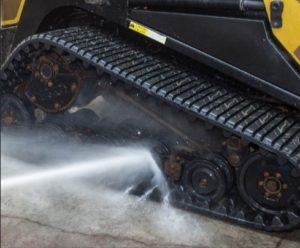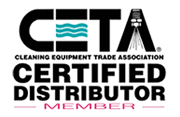 Many industrial establishments are now participating in industrial water reclamation to help save money and protect the environment. This decision is not only smart but also shows commitment from businesses to reduce their carbon footprint and become more ecologically responsible.
Many industrial establishments are now participating in industrial water reclamation to help save money and protect the environment. This decision is not only smart but also shows commitment from businesses to reduce their carbon footprint and become more ecologically responsible.
Water reclamation is how you treat and recycle water for reuse, a process that eliminates the need to draw from natural sources. But for reclamation to be successful, you’ll need to have the right equipment.
Discover four types of equipment you need for industrial water reclamation.
1. Pre-Treatment Equipment
Pre-treatment equipment isn’t just one single piece of machinery but rather a combination of several components that prepare water for the filtration process. These components often include screens, settling tanks, and skimmers. Their job is to remove suspended solids, floating debris, and fine particles from the wastewater to make sure that only clean water reaches the treatment plant.
Screens, for instance, physically filter the water when they trap solid objects and debris. This step reduces the amount of solids and debris that enter the filtration process. Settling tanks are a more efficient way of suspended solid removal as they use gravity to separate particles from the water. The solid waste settles at the bottom of the tank due to its weight, while the clean water collects at the top.
Usually, you’ll need to run the water over a weir or baffle to make sure that only clean water moves on for further treatment. Finally, skimmers remove oil and grease from water through floating devices that trap these substances on the surface.
The entire solid waste removal process is quite thorough, especially when you use all of these components.
2. Filtration Equipment
The filtration stage is where you use special filters or membranes to remove contaminants from water. Depending on the size of your operation, you’ll need a range of filtration machinery that can accommodate different flow and pressure requirements.
The most common types of filtration equipment are gravity filters, sand filters, and membrane bioreactors (MBRs). Gravity filters use gravity to force the water through a series of coarse and fine screens that trap impurities. The process is relatively simple and cost-effective but might not always remove all impurities.
Sand filters, on the other hand, use a combination of sand and gravel to remove both large and small impurities from water. This option is quite efficient but requires more maintenance due to the buildup of sand particles over time.
MBRs are the most advanced choice for water reclamation. They employ a combination of aerobic and anaerobic processes along with special membranes to remove more impurities from wastewater. The membranes are also easily replaceable when you need to clean them out, which makes the entire process more effective than basic filtration alone.
3. Sludge Removal Equipment
Sludge is a by-product of the treatment process that you need to remove periodically. This waste can affect the efficiency of your reclamation equipment, clog filters, and lead to unpleasant odors.
The sludge is basically an accumulation of solid particles that either settle on the bottom of pre-treatment tanks or remain on equipment after filtration.
Sludge removal starts off with a sludge dewatering process that uses special equipment like belt pressers and centrifuges. Belt pressers use pressure and specially designed belts to squeeze out water from the sludge. The process requires a lot of energy to produce dry cakes that can easily be disposed of.
Centrifuges rely on centrifugal force to spin the sludge and separate the remaining water from the solids. The solids are then dried and eventually disposed of appropriately. This method is quite efficient, but you’ll need to invest in a centrifuge machine.
4. Disinfection Equipment
Disinfection is the stage where you kill or inactivate all pathogens and microorganisms that are still present in the water. This step is crucial if you intend to use the water for other processes in your industrial operations.
The most common disinfection equipment includes ultraviolet (UV) systems and chlorine injection systems. UV systems use germicidal UV light to kill microorganisms in water. UV light disrupts the cellular function of these microorganisms so they don’t grow or reproduce.
Chlorine injection systems use chlorine gas to disinfect water. The process is quite efficient and cost-effective, but make sure you measure the concentrations of chlorine in the water to avoid over-treatment.
All these methods rely on specialized equipment designed to disinfect water effectively. Depending on the scale of your operation, you may need to invest in both systems to ensure proper disinfection.
Remember that disinfection is only effective if you properly complete all prior treatments. If there are still impurities in the water, disinfection won’t be effective, and the water could still contain pathogens. You should always double-check that all impurities are absent before you start the disinfection stage.
If you need to set up a water reclamation system, consult with us at Ben’s Cleaner Sales Inc. and get the equipment you need. Our experienced team can help you find the best solutions for your operations. We also offer delivery and installation services, so you won’t have to worry about the equipment setup. Give us a call today and get started on your water reclamation project.

